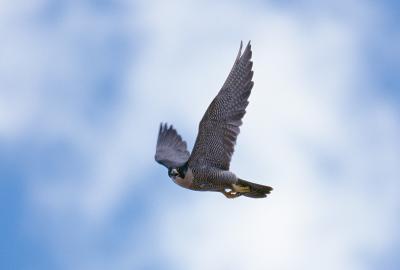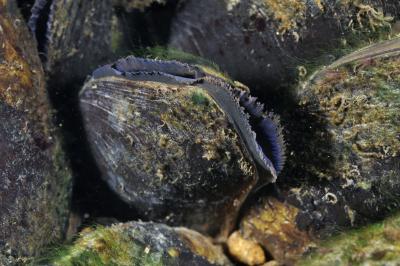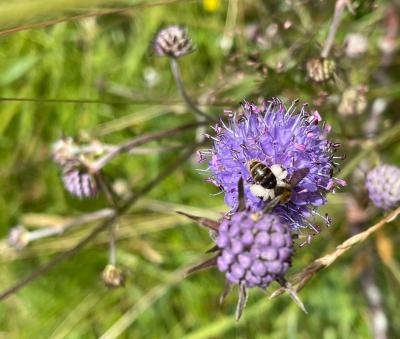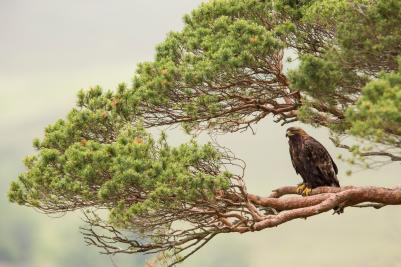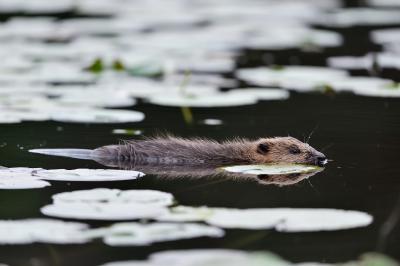Wood ants
Formica aquilonia and formica lugubris are the two ‘true’ wood ant species in the Cairngorms National Park
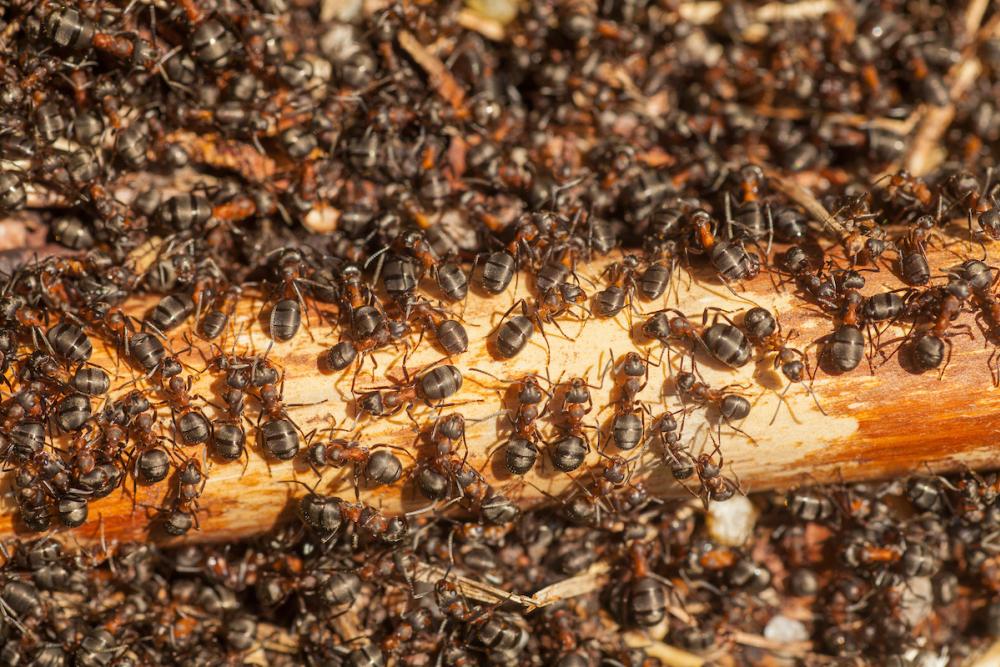
In Scotland, you’ll find two species of wood ant: the Scottish wood ant (formica aquilonia) and the hairy wood ant (formica lugubris). Both usually opt to make their home in native woodlands, such as Scots pine and birch.
Factsheet
Weight: An individual worker ant weighs about the same as a grain of sand (1.5mg)
Lifespan: From days to decades, depending on the ant’s role
Best time to spot: Spring to autumn
Wood ants are a large species of ant with distinctive red and dark brown colouration.
Their lifespan depends on their role: worker wood ants live for several months, while queen ants – responsible for laying eggs and sustaining and creating new colonies – can live for more than a decade.
Wood ants live in domed nest mounds that can reach two metres tall. But the mound is only a proportion of the nest. Under the surface chambers, wood ants excavate a network of tunnels, providing a place to hibernate in winter to avoid freezing temperatures.
Nests are highly complex structures and are the product of years of work – sometimes even decades. Cleverly built, their orientation helps maximise sunlight. Warmth from the sun is important for nest survival, helping to protect the queen (sometimes multiple queens), brood (larvae) and food stores.
Multiple ‘satellite’ nests tend to surround the main nest, with trails of worker ants keeping these connected. The scale and quality of the woodland environment will determine the number of nests in an area.
Worker ants defend their nests aggressively from predators and will fight off neighbouring colonies that intrude on their territory.
You’ll most likely find them in areas of remnant ancient woodland, but good numbers also exist in long-established commercial forests that contain native species. Strathspey and Deeside have the largest populations.
Did you know?
In Scotland, you’ll find two species of wood ant: the Scottish wood ant (formica aquilonia) and the hairy wood ant (formica lugubris). Both usually opt to make their home in native woodlands, such as Scots pine and birch.
Factsheet
Weight: An individual worker ant weighs about the same as a grain of sand (1.5mg)
Lifespan: From days to decades, depending on the ant’s role
Best time to spot: Spring to autumn
Wood ants are a large species of ant with distinctive red and dark brown colouration.
Their lifespan depends on their role: worker wood ants live for several months, while queen ants – responsible for laying eggs and sustaining and creating new colonies – can live for more than a decade.
Wood ants live in domed nest mounds that can reach two metres tall. But the mound is only a proportion of the nest. Under the surface chambers, wood ants excavate a network of tunnels, providing a place to hibernate in winter to avoid freezing temperatures.
Nests are highly complex structures and are the product of years of work – sometimes even decades. Cleverly built, their orientation helps maximise sunlight. Warmth from the sun is important for nest survival, helping to protect the queen (sometimes multiple queens), brood (larvae) and food stores.
Multiple ‘satellite’ nests tend to surround the main nest, with trails of worker ants keeping these connected. The scale and quality of the woodland environment will determine the number of nests in an area.
Worker ants defend their nests aggressively from predators and will fight off neighbouring colonies that intrude on their territory.
You’ll most likely find them in areas of remnant ancient woodland, but good numbers also exist in long-established commercial forests that contain native species. Strathspey and Deeside have the largest populations.
Did you know?
Wood ants work seasonally. They hibernate between November and April/May, with temperature and sunlight levels determining when exactly they emerge. Nest temperatures between 25°C and 30°C usually spark worker ant activity. It’s during this time that eggs are laid. The summer months (June to September) centre around the kids, as efforts are directed towards nurturing the newest members of the population.
Mating flights between winged males and virgin queens happen between June and August and occur between ants from different colonies. This helps to strengthen the genetic diversity of the species. The male ant may mate with multiple queens.
As predatory insects, wood ants feed on a range of invertebrates, but most of the colony’s fuel comes from aphid honeydew. This sticky substance is secreted by aphids and is little changed from the sugary plant sap they devour.
Historical woodland loss – largely driven by development and some types of woodland management – has led to wood ants disappearing from some areas, or populations becoming fragmented. They are now a species of conservation concern, especially given their role as a keystone species.
As critical ecosystem engineers, they contribute to a healthy ecosystem by:
- affecting tree growth through their relationship with aphids and their eating of leaf-feeding insects
- influencing soil communities and nutrient cycles through nest creation
- acting as a source of food for a variety of forest species such as capercaillie and badger, as well as specialist species such as the gallows spider (dipoena torva)
- providing habitat for a range of specialist invertebrates that live exclusively inside wood ant nest mounds, e.g. the shining guest ant (formicoxenus nitidulus)
- anting: a process in which birds use wood ants for parasite removal.







